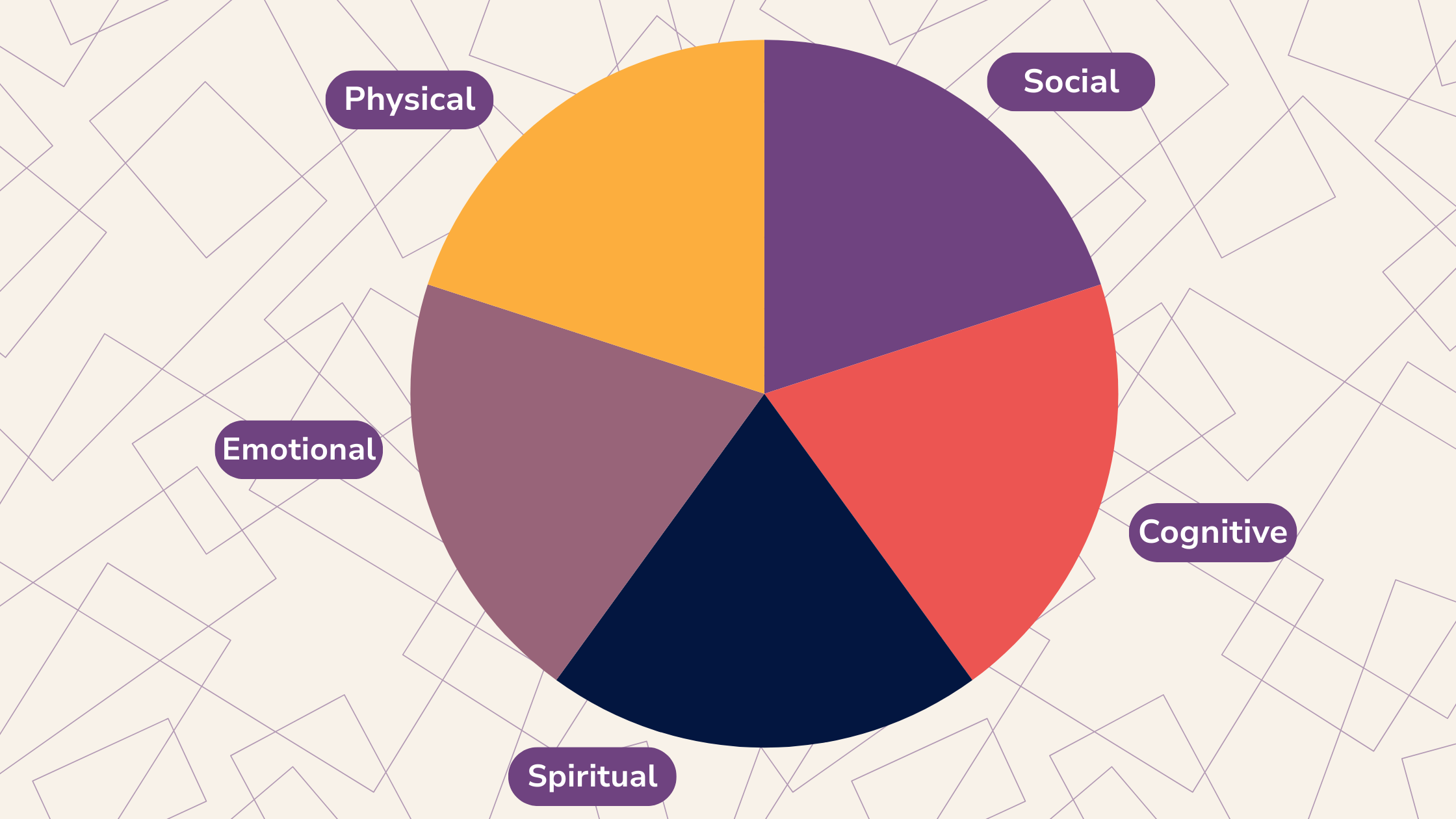The Five Dimensions of Grief: A More Human Way to Understand Loss
If you’ve ever felt like the "five stages of grief" didn’t quite fit your experience, you’re not alone.
The truth? Grief isn’t linear. It doesn’t follow a neat checklist of denial, anger, bargaining, depression, and acceptance. In fact, many of us feel like we’re skipping stages, looping back, or completely missing some altogether—and that’s totally normal.
I’ve written before about the 5- and 7-stage models of grief, and while I think they can be used as a framework to offer some language to name what we're going through, I don’t love how they suggest there’s a “right” order to grieving—or that you’re somehow “done” when you hit acceptance. Grief is messier than that.
Through my training and work with Annie’s Hope, an amazing center for grieving kids in St. Louis, I’ve learned about the Five Dimensions of Grief model. It offers a fuller, more compassionate view of how grief shows up—not just in our emotions, but in our bodies, minds, relationships, and beliefs. It’s a more customizable way to understand how your grief is showing up for you individually.
Let’s break it down.
The Five Dimensions of Grief
Grief isn’t one thing. It’s many things happening all at once. This model, used pretty regularly by Annie’s Hope, acknowledges five distinct but connected areas where grief shows up:
Physical – how our bodies respond to grief
Emotional – the rollercoaster of feelings we experience
Cognitive – how grief impacts our thinking
Social – the way grief affects our relationships
Spiritual – how we make meaning after loss
Let’s dive a little deeper into each one.
1. Physical Grief
Grief lives in the body. It can look like:
Loss of appetite (or stress eating)
Sleep issues (too much or not enough)
Headaches, stomachaches, or muscle tension
Fatigue or even hyperactivity
It makes sense, right? When your heart breaks, your body feels it too.
Coping Tip: Try walking, yoga, deep breathing, or even punching a pillow (yes, seriously).
2. Emotional Grief
This is the one we expect—feelings like:
Sadness, anger, fear, guilt, relief, loneliness, and more
Mood swings
Feeling like you’re on autopilot
But emotional grief isn’t just crying all day. Sometimes it’s feeling nothing at all. That’s grief, too.
Coping Tip: Cry if you need to. Talk to a counselor. Take things off your plate. Rest.
3. Cognitive Grief
Grief messes with your brain. You might notice:
Trouble concentrating
Obsessive thinking about the loss
Forgetfulness
Asking big questions like “Why did this happen?”
Your brain is trying to make sense of the senseless. Be gentle with it.
Coping Tip: Write down your thoughts. Take breaks. Meditate. Let your brain breathe.
4. Social Grief
Grief can be incredibly lonely. It shows up socially as:
Withdrawing from friends and family
Feeling disconnected or out of place
Fighting more often or feeling misunderstood
Grief can change your whole social world—who you talk to, where you feel safe, how much you can handle.
Coping Tip: Share stories. Ask for help. Find a grief support group. Stay connected however you can.
5. Spiritual Grief
This one can be hard to talk about, but it matters:
Questioning your beliefs
Feeling angry at God (or the universe, or whatever you believe)
Searching for meaning in the loss
It’s okay if your beliefs shift. It’s okay if they don’t. Grief is deeply spiritual, whether or not you're religious.
Coping Tip: Journal about your beliefs. Talk to a spiritual leader. Explore new or familiar practices that help you feel grounded.
Why This Model Works (When the “Stages” Don’t)
The Five Dimensions of Grief feel real. They’re not a checklist to get through—they’re a mirror to what’s actually happening inside and around us. They remind us that grief touches everything: our bodies, our minds, our hearts, our connections, and our sense of purpose.
And they give us something we all crave when we’re grieving: validation.
You’re not broken if you’re not crying. You’re not doing it wrong if your grief shows up as a stomachache or a spiral of thoughts or a total loss of faith. You’re grieving. That’s enough.
Try This
Draw a circle and divide it into five sections—one for each dimension. Reflect on how grief has shown up in each area for you. Which dimensions feel the heaviest right now? Which ones need a little more care?
Grief isn’t one-size-fits-all, but with the right lens, it can be something we learn to understand—and even companion.
You don’t have to grieve alone.

